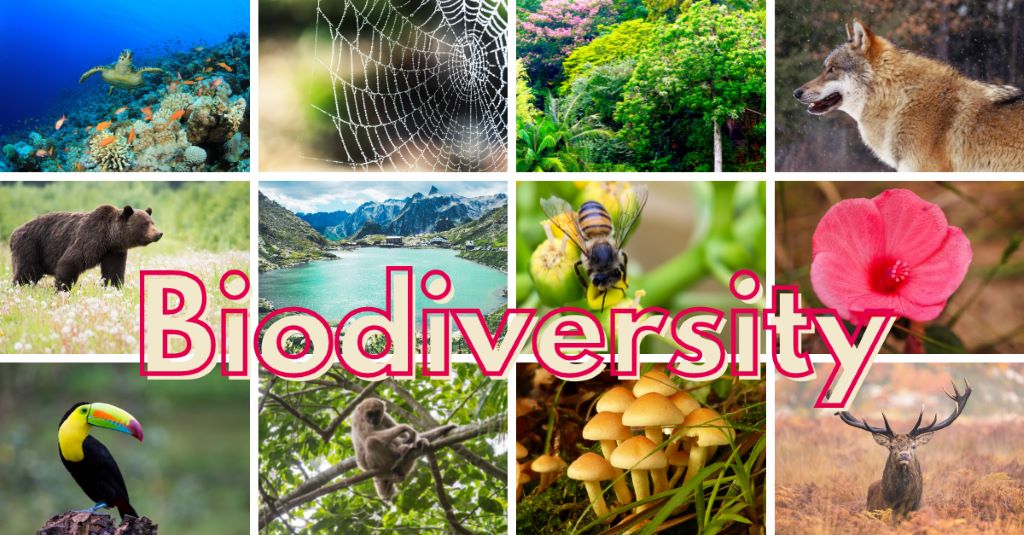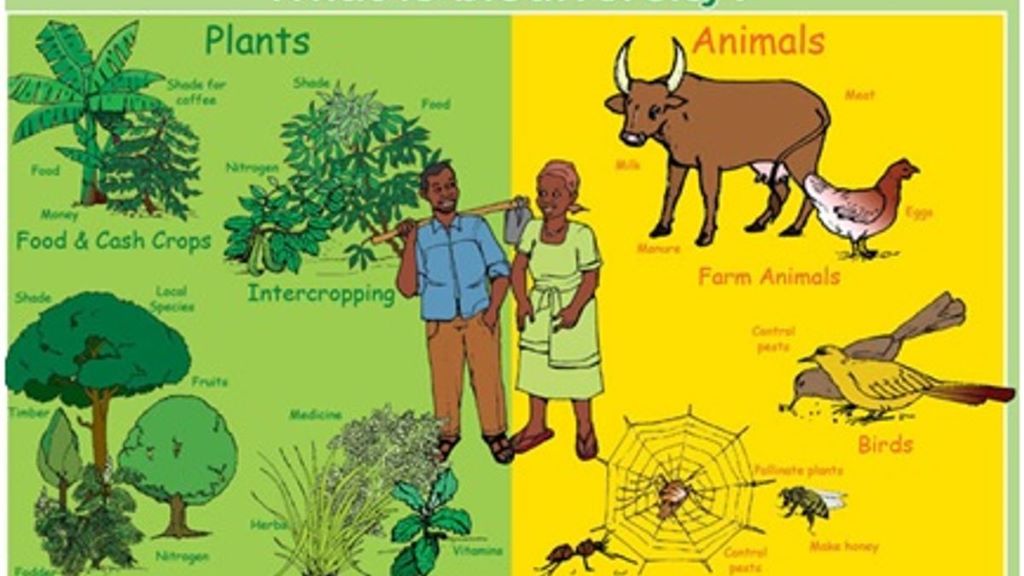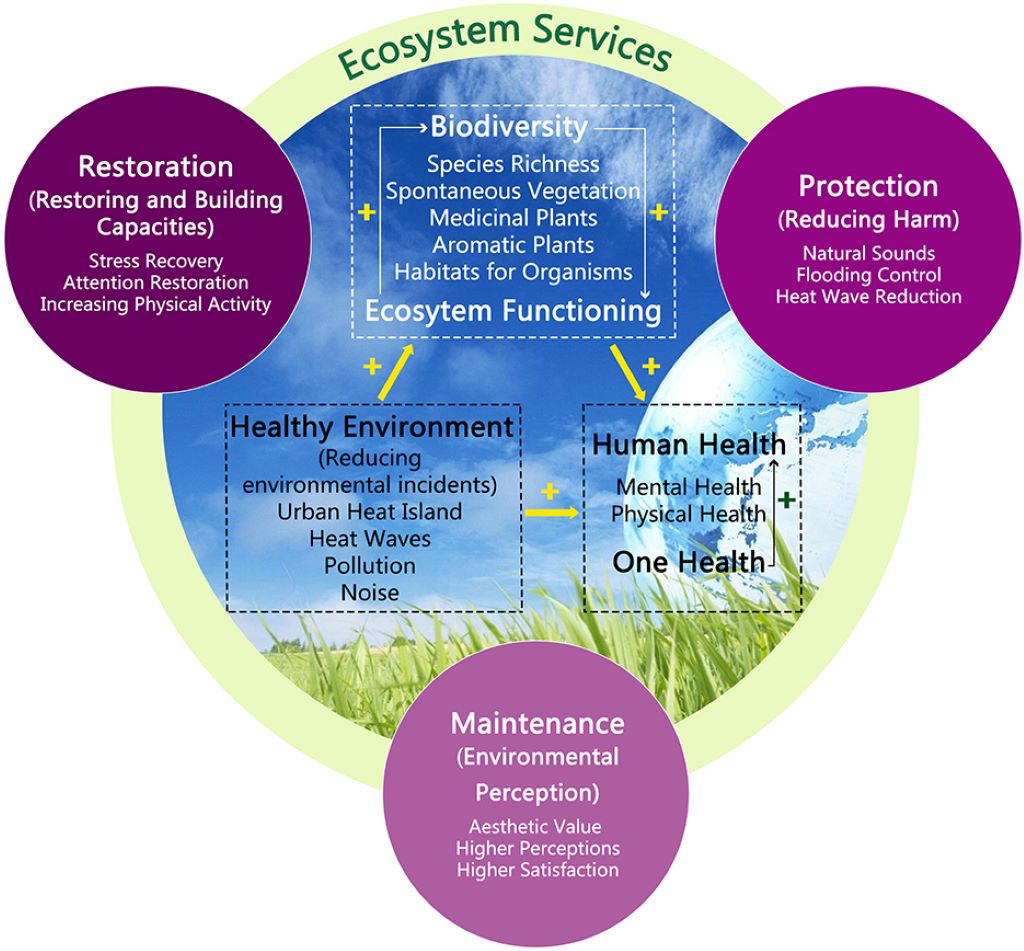
Have you ever wondered why some ecosystems seem to withstand the test of time, while others crumble at the slightest disturbance? Well, the secret lies in biodiversity – the incredible variety of life forms that call our planet home. In this engaging journey, we’ll explore how can an increase in biodiversity lead to an increase in ecosystem stability? Picture this: ecosystems as intricate, interconnected puzzles, where each species plays a vital role. As we delve into this topic, you’ll discover the fascinating reasons why biodiversity is nature’s hidden superpower.
What Is Biodiversity?
Before we dive into the nitty-gritty of how biodiversity bolsters ecosystem stability, let’s start with the basics. Biodiversity, short for biological diversity, is like a grand gala of life on Earth. It encompasses the variety of species, genes, and ecosystems found in our world. Think of it as a vibrant tapestry woven with the threads of life – from the tiniest microorganisms to majestic creatures like elephants and towering ancient trees.
But why is biodiversity so crucial? Imagine your favorite recipe – it’s not just one ingredient that makes it delicious; it’s the unique combination of various components. Similarly, in nature, it’s the rich mix of species and genetic diversity that keeps ecosystems thriving.

The Puzzle of Ecosystem Stability
Now, let’s shift our focus to ecosystems. Think of them as complex puzzles, where each species represents a unique puzzle piece. When these pieces fit together perfectly, the puzzle – or the ecosystem – remains stable and functions smoothly.
Ecosystem stability refers to an ecosystem’s ability to resist change or recover quickly after a disturbance. Think about your favorite Jenga tower – it remains stable when all the wooden blocks are in place, but if you start removing too many, it becomes wobbly and eventually collapses. Similarly, ecosystems rely on the presence of various species to maintain their balance.
The Keystone Species: Nature’s Architects
Ever heard of the term “keystone species”? These are the true architects of ecosystems, holding everything together. Picture them as the central pieces in our puzzle. They may not be the most abundant or the largest creatures, but their presence is essential for maintaining ecosystem stability.
Let’s consider an example: sea otters in kelp forests. These fluffy marine mammals feed on sea urchins, which are herbivores that graze on kelp. Without sea otters, the sea urchin population would explode, leading to overgrazing of kelp. This would disrupt the entire ecosystem, affecting numerous other species that depend on kelp for shelter and food. Thus, sea otters act as keystone species, ensuring the stability of the kelp forest ecosystem.
The Power of Redundancy
Imagine you’re building a skyscraper, and each steel beam serves as crucial support. Now, think about having not one but multiple beams performing the same role. This redundancy adds extra strength, making the structure more stable. In ecosystems, biodiversity provides redundancy by having multiple species that perform similar functions.
Let’s take a look at pollinators – bees, butterflies, hummingbirds, and even bats. They all contribute to pollination, a vital ecological service that allows plants to reproduce. If one pollinator species were to decline due to a disease or environmental change, the presence of other species ensures that the job still gets done. This redundancy is a safety net that enhances ecosystem stability.
Niche Specialization: Finding Your Niche Biodiversity
In the grand tapestry of biodiversity, each species has its own unique role or niche. Imagine it as different instruments in an orchestra, each playing a distinct melody. These niches help prevent competition for resources and allow species to coexist harmoniously.
For example, in a tropical rainforest, there are countless species of birds, each with its preferred type of food. Some birds specialize in eating insects high up in the canopy, while others focus on fruits lower down. This specialization reduces competition for resources and contributes to the stability of the entire ecosystem.
The Web of Interdependence
Now, let’s dive deeper into the intricacies of ecosystem stability. Imagine all the species in an ecosystem as threads in a complex, interconnected web. When you tug on one thread, it sends ripples throughout the entire web. Similarly, in ecosystems, the interactions between species are like threads that weave together the fabric of stability.
Consider predator-prey relationships – a classic example of interdependence. If the predator population increases, the prey population decreases, which, in turn, affects the predator population. This delicate balance helps maintain stability within the ecosystem. If one species is removed or its numbers decline, it can set off a chain reaction, disrupting the entire web.
Resistance to Invasive Species
Nature is constantly facing challenges from invasive species – non-native organisms that can wreak havoc in new environments. Think of them as uninvited guests at a party, causing chaos. However, a diverse ecosystem is more resilient to these intruders.
When an ecosystem has a variety of species, it’s like having a security system with many layers. Invasive species often struggle to establish themselves in such ecosystems because they face competition from native species. This natural resistance is a result of the diverse web of interactions and contributes to the overall stability of the ecosystem.
Adaptation to Changing Conditions
In today’s rapidly changing world, ecosystems face a barrage of challenges, from climate change to habitat destruction. Biodiversity acts as a buffer, allowing ecosystems to adapt to these changing conditions.
Think of it as a toolbox filled with different tools. In the face of a new challenge, such as a changing climate, having a wide range of species increases the likelihood that at least some of them will possess the necessary traits to survive and thrive. This adaptability is crucial for the long-term stability of ecosystems.
Ecosystem Services and Human Benefits
Ecosystems aren’t just pretty landscapes or wildlife habitats; they provide a wide array of services essential for human well-being. These ecosystem services include pollination, clean water, carbon sequestration, and more. Guess what? Biodiversity plays a pivotal role in delivering these services efficiently.
For instance, healthy forests with diverse tree species can capture and store more carbon dioxide from the atmosphere, helping combat climate change. Similarly, diverse wetlands filter pollutants from water, ensuring a clean supply for human use. By maintaining biodiversity, we ensure these essential services continue to benefit us.

Case Studies: Real-Life Examples
Let’s put theory into practice by exploring some real-life examples of how an increase in biodiversity leads to greater ecosystem stability.
Case Study 1: Yellowstone National Park
In the mid-20th century, Yellowstone National Park faced a crisis. The gray wolf, a keystone species, had been extirpated from the park. This led to an explosion in the elk population, which, in turn, caused overgrazing and habitat degradation. Ecosystem stability was in jeopardy.
To restore balance, wolves were reintroduced in the 1990s. The results were astounding. The presence of wolves not only kept the elk population in check but also influenced their behavior. Elk started avoiding certain areas, allowing vegetation to recover. This ripple effect extended to other species, from beavers benefiting from more available willow trees to songbirds returning to the restored habitat. Yellowstone’s ecosystem, with its increased biodiversity due to the wolves’ return, became more stable and resilient.
Case Study 2: Coral Reefs
Coral reefs are among the most biodiverse ecosystems on the planet, but they face numerous threats, including warming oceans and pollution. However, researchers have discovered that reefs with higher species diversity are more resilient to these stressors.
In a diverse coral reef, different species of coral have varying tolerances to temperature changes. When a coral species sensitive to warming is present alongside more heat-tolerant species, the reef as a whole has a better chance of surviving temperature spikes. This diversity-driven resilience is crucial for the stability of these fragile ecosystems.
Threats to Biodiversity and Ecosystem Stability
As we celebrate the wonders of biodiversity, it’s essential to acknowledge the threats it faces. Human activities, such as deforestation, pollution, habitat destruction, and overexploitation of resources, are driving species extinction at an alarming rate. When biodiversity declines, ecosystems become more vulnerable and less stable.
Imagine pulling out puzzle pieces from our ecosystem puzzle – the more you remove, the less stable it becomes. If we continue down this path, we risk unraveling the intricate web of life that sustains us.
Conservation and Restoration Efforts
The good news is that we have the power to make a difference. Conservation and restoration efforts are essential in preserving biodiversity and enhancing ecosystem stability. Governments, organizations, and individuals around the world are working tirelessly to protect and restore ecosystems.
By establishing protected areas, implementing sustainable resource management practices, and supporting habitat restoration initiatives, we can help ensure that biodiversity thrives and ecosystems remain stable.
FAQs
Why is biodiversity important for ecosystem stability?
Biodiversity is crucial because it provides redundancy, niche specialization, and a web of interdependence within ecosystems. It enhances resistance to invasive species and helps ecosystems adapt to changing conditions, ultimately bolstering stability.
What is a keystone species, and why is it vital for ecosystems?
A keystone species is one that has a disproportionately large impact on its ecosystem compared to its abundance. These species play essential roles, often maintaining the balance and stability of entire ecosystems.
How does biodiversity benefit humans?
Biodiversity provides ecosystem services like pollination, clean water, and carbon sequestration, which are essential for human well-being. It also supports agriculture, medicine, and countless industries.
What can individuals do to support biodiversity and ecosystem stability?
Individuals can contribute by practicing sustainable living, supporting conservation organizations, and advocating for policies that protect the environment. Small actions, when multiplied, can make a significant difference.
Why is it essential to address threats to biodiversity?
Addressing threats to biodiversity is crucial because the decline of species and ecosystems can disrupt the stability of natural systems and negatively impact human society. Protecting biodiversity is a matter of preserving our own well-being.
Conclusion
So there you have it, the incredible story of how an increase in biodiversity leads to an increase in ecosystem stability. Nature’s intricate web of life, where every species has a role to play, is a testament to the beauty and resilience of our planet.
When considering coffee filters, it’s essential to ask whether they are biodegradable, as, as stewards of the Earth, it’s our responsibility to protect and celebrate biodiversity to ensure that ecosystems continue to thrive, providing us with essential services, inspiring wonder, and maintaining the stability that allows life to flourish.
So, next time you take a walk in the woods or gaze upon a coral reef, remember the remarkable power of biodiversity – nature’s hidden superpower that keeps our world in balance.
